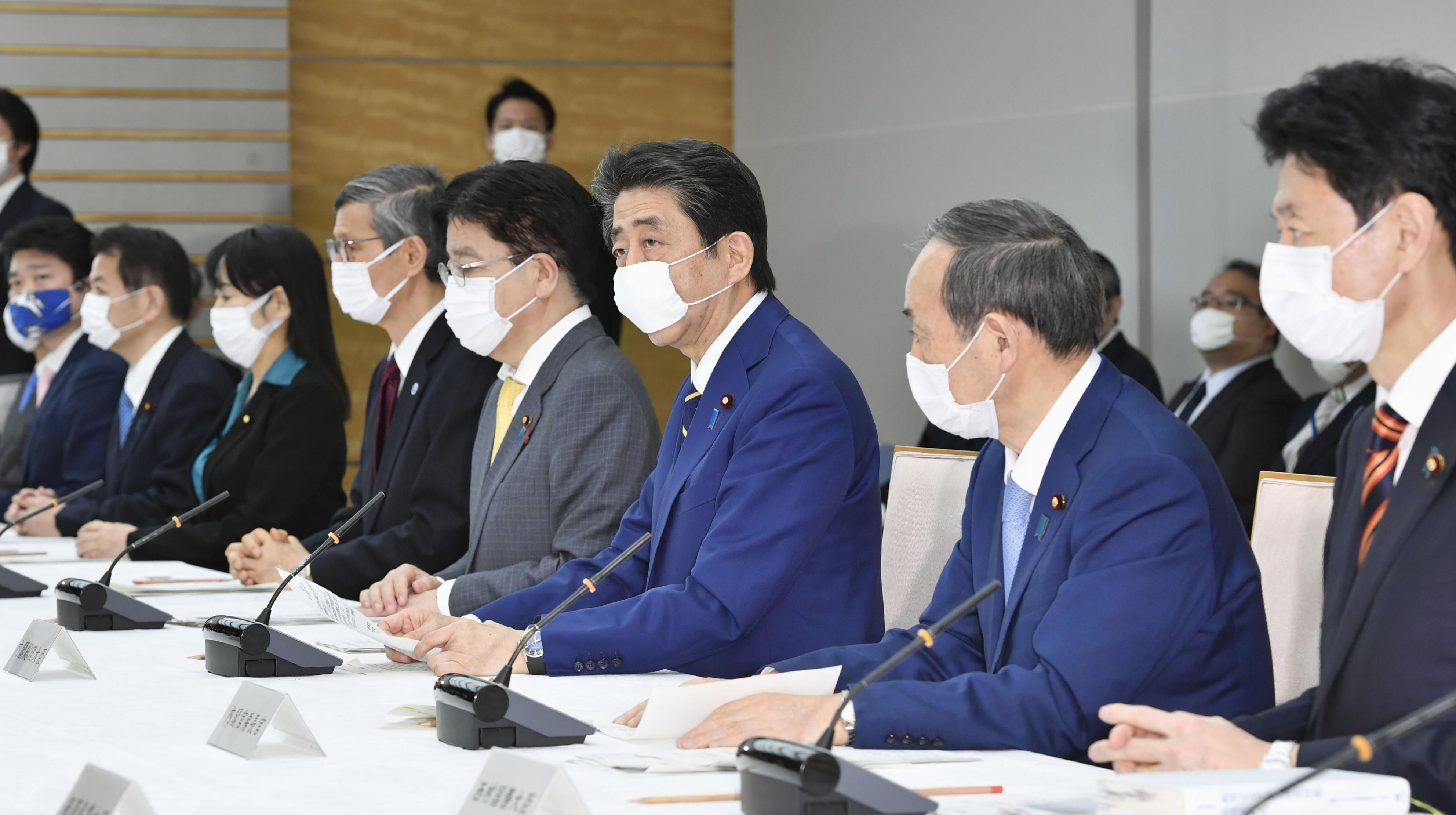Japan and the COVID-19 Pandemic

On 16 January, the government reported the first case of COVID-19 in Japan. Since then, the number of cases has increased to 8600, of which more than 170 people have died. In the initial period of the spread of the coronavirus (SARS-CoV-2), the authorities published data about a small daily increase in the number of infected. It was not until 24 March, after the decision of the International Olympic Committee to postpone the games until 2021, that reports of more cases began to reach the Abe’s government was accused of underestimating the threat or even concealing the true scale of the problem for the reasons of maintaining the countries’ image and desire to hold the games. To date, he has been facing allegations of a lack of resolute action in the fight against the coronavirus and excessive reliance on society’s self-discipline. Only on 7 April did the government decide to introduce a month-long state of emergency in seven of 47 prefectures (including Tokyo and Osaka), inhabited by more than 40% of the population. On 16 April, Abe announced that the state of emergency will apply to the entire country.
Response to the Pandemic
In counteracting the spread of the virus, the government began by introducing restrictions on travellers to Japan. Initially, visas were limited for Chinese from Hubei province where the outbreak was first reported and South Korea residents. On 1 April, the government banned the entry of travellers from 73 countries and regions, including from the U.S., Europe, China, South Korea, and Canada.
The lack of specifics about a state of emergency in the Japanese constitution makes it difficult for the government to impose restrictions on citizens. Therefore, Prime Minister Abe had limited himself to public appeals to specific groups in society. In response, on 28 February, schools and colleges temporarily suspended classes. The government addressed a similar appeal to citizens and employers to stay at home and enable employees to work remotely. However, only some companies and individuals followed it.
To equip the government with more effective instruments to counteract the pandemic, on 13 March parliament amended the law, giving the prime minister the right to introduce a state of pandemic emergency. Under the law, the government may authorise the governors of prefectures to, among others, introduce recommendations on self-isolation, closing schools and public places, and obtaining resources necessary to combat the virus, also by expropriating property.
At the same time, contrary to WHO recommendations, Japan is not extensively testing citizens for the presence of the SARS-CoV-2 virus, with only 747 tests per million inhabitants (as of 16 April, South Korea reported it conducts 10,200 tests per million, Australia, 14,600, and Germany, 20,700). The government argues that even with COVID-19 symptoms, patients should first stay at home and treat themselves without exposing the healthcare system to overload. On the other hand, people who have contracted the virus are admitted to hospitals.
Expected Economic Outcomes
Data for the last quarter of 2019 already showed a slowdown in the Japanese economy and a possible recession. During this period, GDP fell by 7.1%, year on year. The cause of the slowdown was, among others, last year’s VAT increase on most goods and services. The economy in 2019 was influenced by the U.S.-China trade dispute, which forced some Japanese companies to move their production designated to be exported to the U.S. from China. Forecasts indicate that in the first quarter of this year, Japan’s GDP fell by 2.9%, and could drop by as much as 11% in the second quarter, year on year. This would mean Japan is officially in recession. What’s more, the postponement of the Olympic Games could cut an additional 1.4 percentage points from Japan’s GDP by the end of 2020. The cost to the budget of preparing the games to date is estimated at a minimum of $12.6 billion. The postponement will force additional expenses of $4-5.8 billion while the losses incurred by private entrepreneurs are difficult to estimate.
Introducing the state of emergency in key prefectures may further aggravate the problems of companies operating there. The COVID-19 pandemic directly affects Japanese industry, including the automotive sector. Already on 10 February, Nissan had to stop the production of cars in one of its factories due to the lack of supplies of parts and raw materials from China. Earlier, Nissan temporarily discontinued production at its Chinese plants. In mid-March, Toyota suspended work in some foreign factories (France, Portugal, U.S., Mexico), and at the end of the month announced the suspension of production lines in all European plants and Russia. From 3 April, work at six of Toyota’s 32 plants in Japan have been interrupted. The problem for the Japanese automotive sector is the expected global decline in interest in buying new cars, which according to some estimates may fall from 90 million in 2019 to 69 million in 2020.
COVID-19 and Plans for Economic and Political Reforms
The pandemic has undermined the assumptions of the premier’s economic reform programme, “Abenomics” as it is called. The implemented “three arrows” strategy—comprised of loosening monetary policy, deficit and debt reduction, and an economic growth strategy—was intended to finally eliminate the problem of yen depreciation and activate private sector investment. The pandemic, combined with low oil prices, will make it less likely that the government will hit its inflation target, which influences the prices of goods and services and ultimately will lead to problems with wages and the labour market.
The Abe government will launch a series of stimulus packages worth around $1 trillion (20% of GDP). They include emergency loans and loan-guarantee funds for the enterprises most affected by the pandemic or direct payments to households. It is expected that as the recession deepens, additional spending will have to be made, as happened during the economic crisis after 2008.
The pandemic also will hinder another long-time goal of Abe’s government—constitutional reform—and in particular Art. 9. According to it, Japan does not formally have a military. The existing Self-Defence Forces (SDF) have very little support in the constitution and all attempts to increase the scope of their tasks by statute (as in 2015, when they were allowed to participate in stabilisation and peace activities abroad) are controversial within Japanese society and among part of the nation’s political elite. In mid-2019, Abe had hoped that the organisation of the Olympic Games would strengthen his support enough to be able to hold snap elections for the lower house of parliament and win the majority necessary to change the constitution. However, current high-ranking LDP politicians suggest the need to postpone discussions on this topic until the end of the pandemic.
Conclusions
The COVID-19 pandemic hinders the Abe government’s economic and political plans. The economy may suffer not only due to the disruptions in the operation of companies but also because of the interruption of global supply chains, within which Japan is both a producer of goods and a recipient of components and raw materials. It will also be hard hit by the decrease in consumption of new products, including cars and electronics. In recovering from the recession, the Japanese government will want to rebuild its export capacity. It will continue its policy of supporting free trade and countering protectionism. The EU should cooperate with Japan in such activities, especially in the context of the unresolved trade dispute between the U.S. and China. The economic crisis will make it more difficult to use the potential of the Japan-EU free trade agreement, which entered into force in 2019. Japanese companies may also withdraw from new investment projects and limit production at their EU plants.
The crisis will probably also paralyse the move to amend the constitution and may lead to an increase in expenditures on the SDF above the current 1% of GDP. This may harm Abe’s policy of increasing Japan’s military involvement in the region and beyond, especially given China’s increasingly confrontational policy, including the regular use of military instruments to support its interests in the region, and closer military cooperation with Russia.


